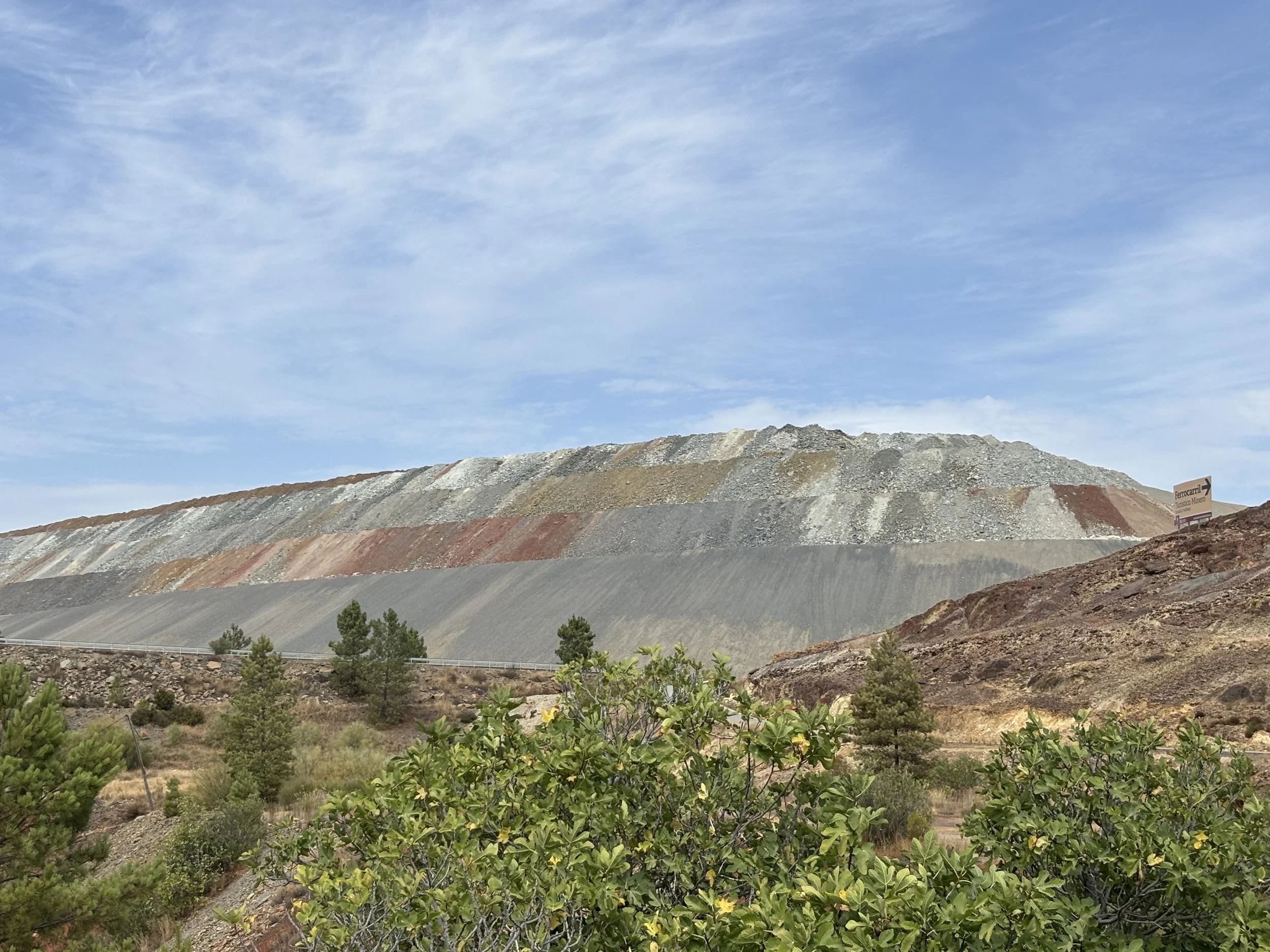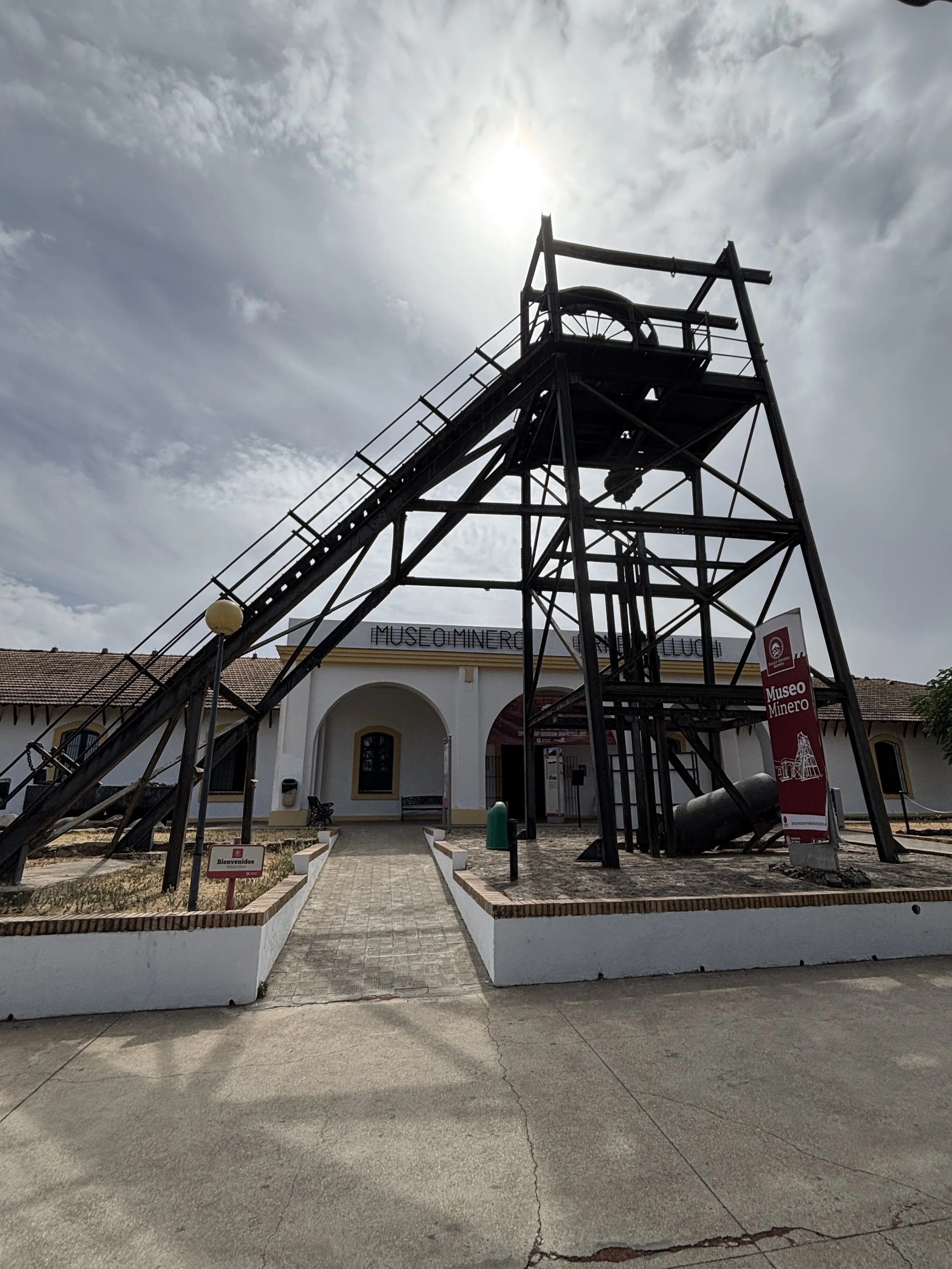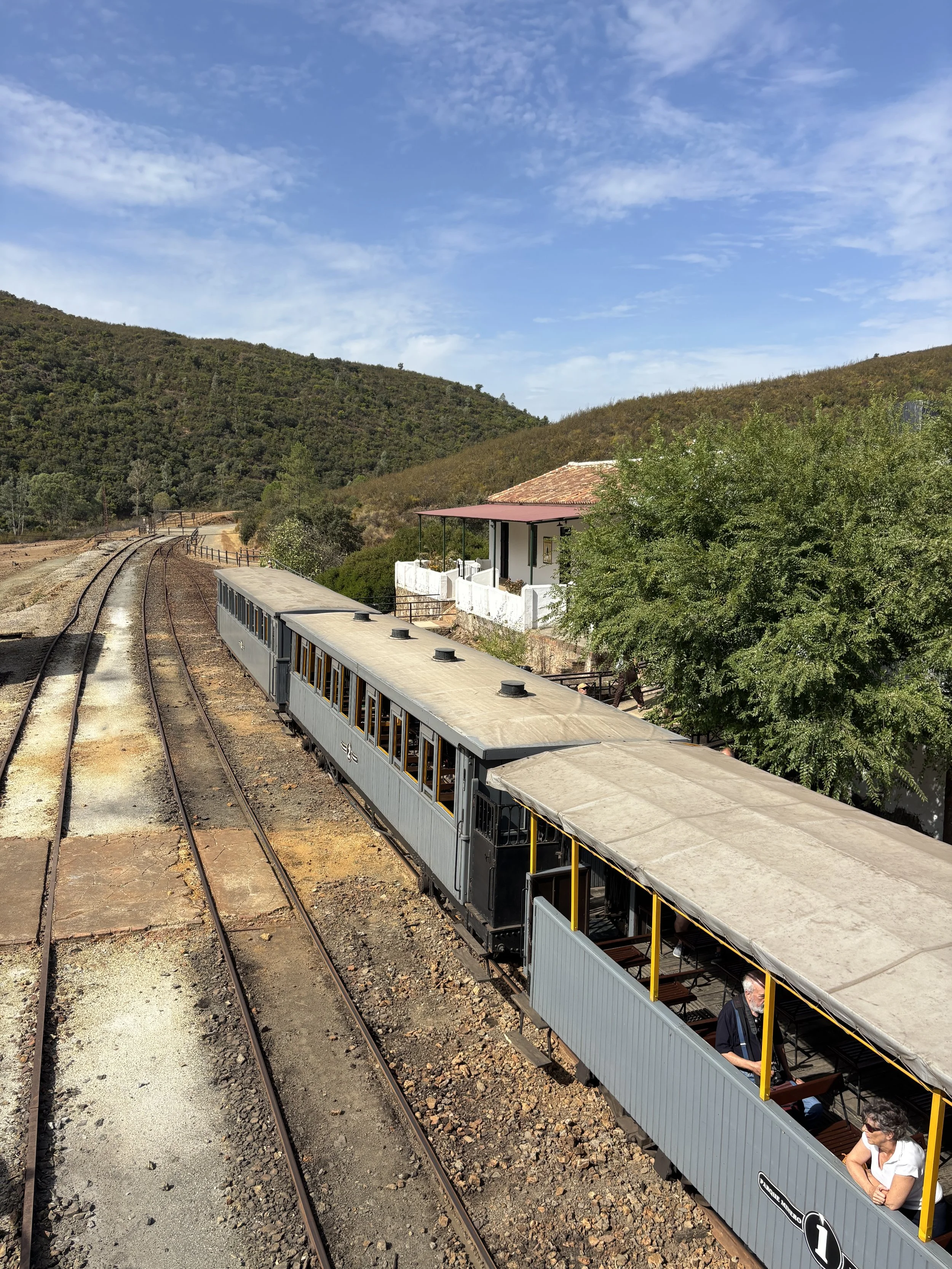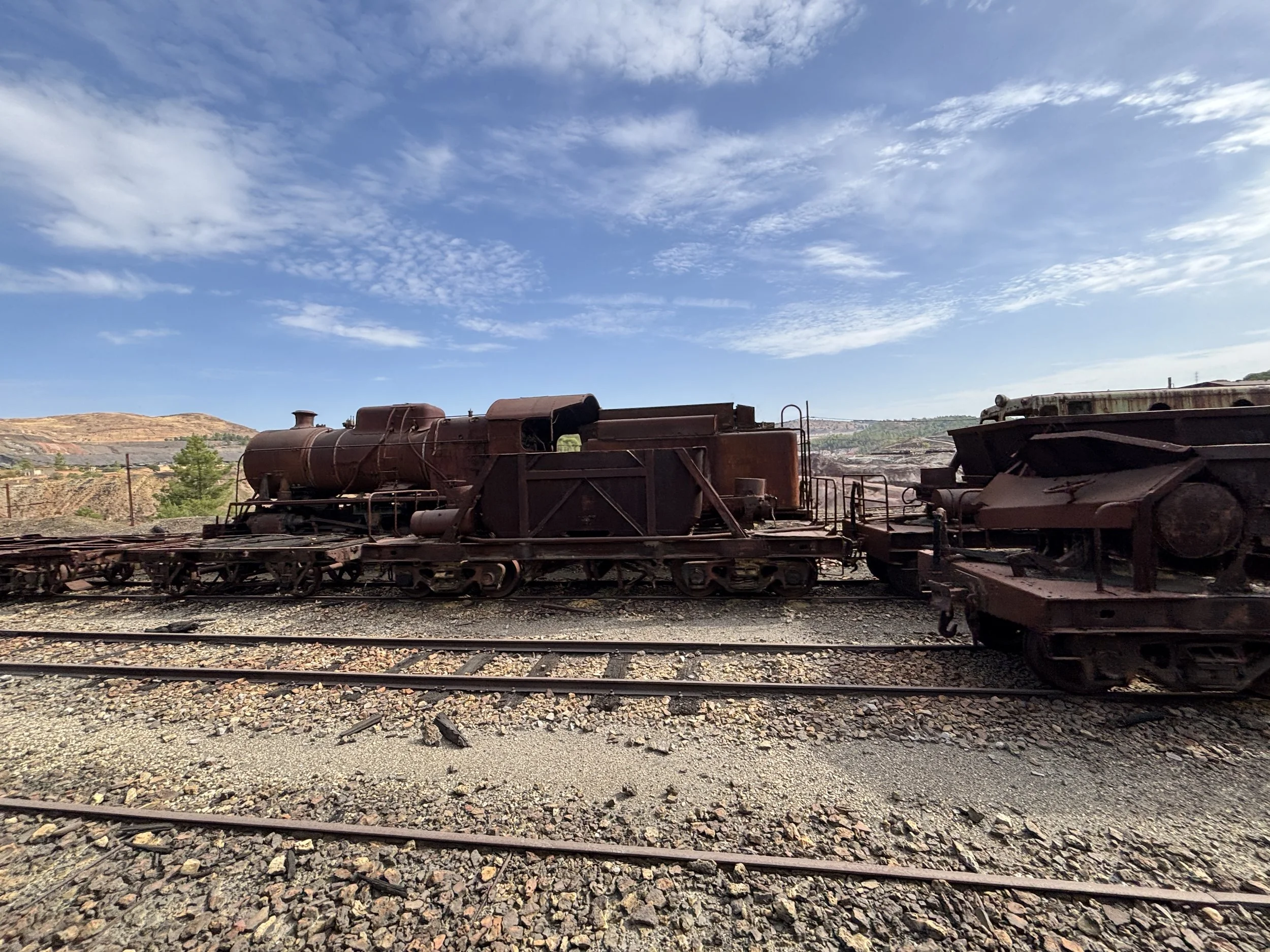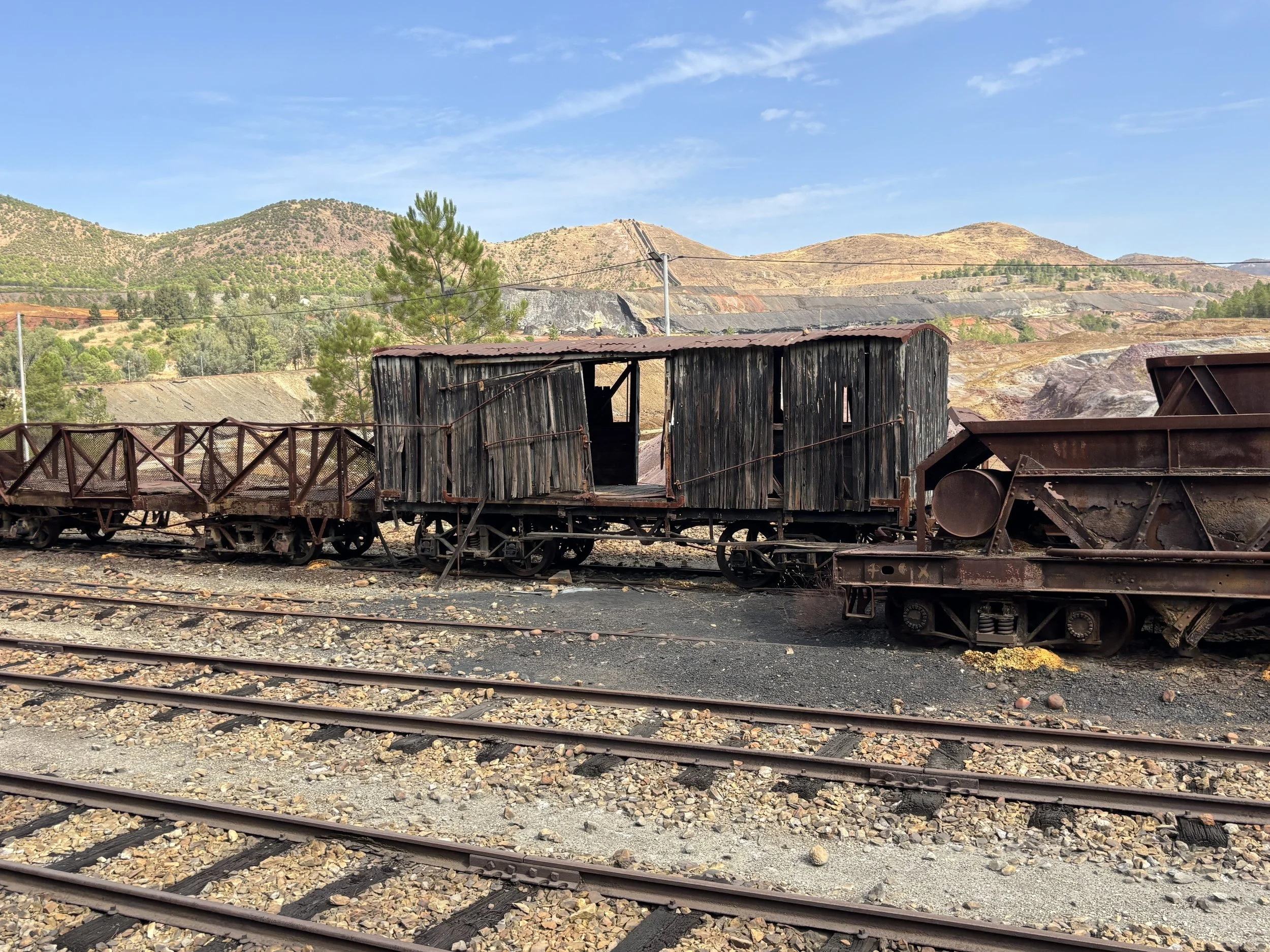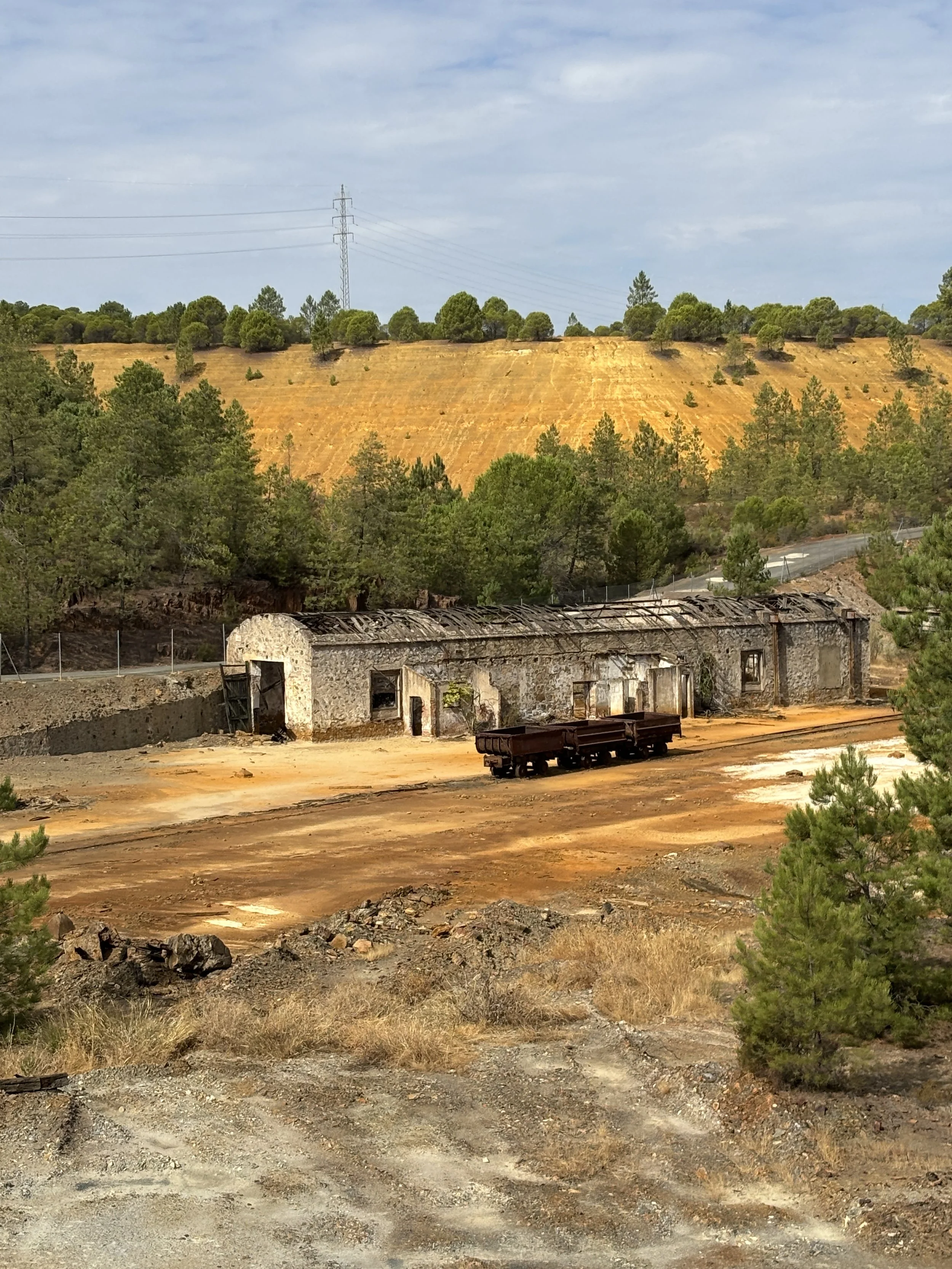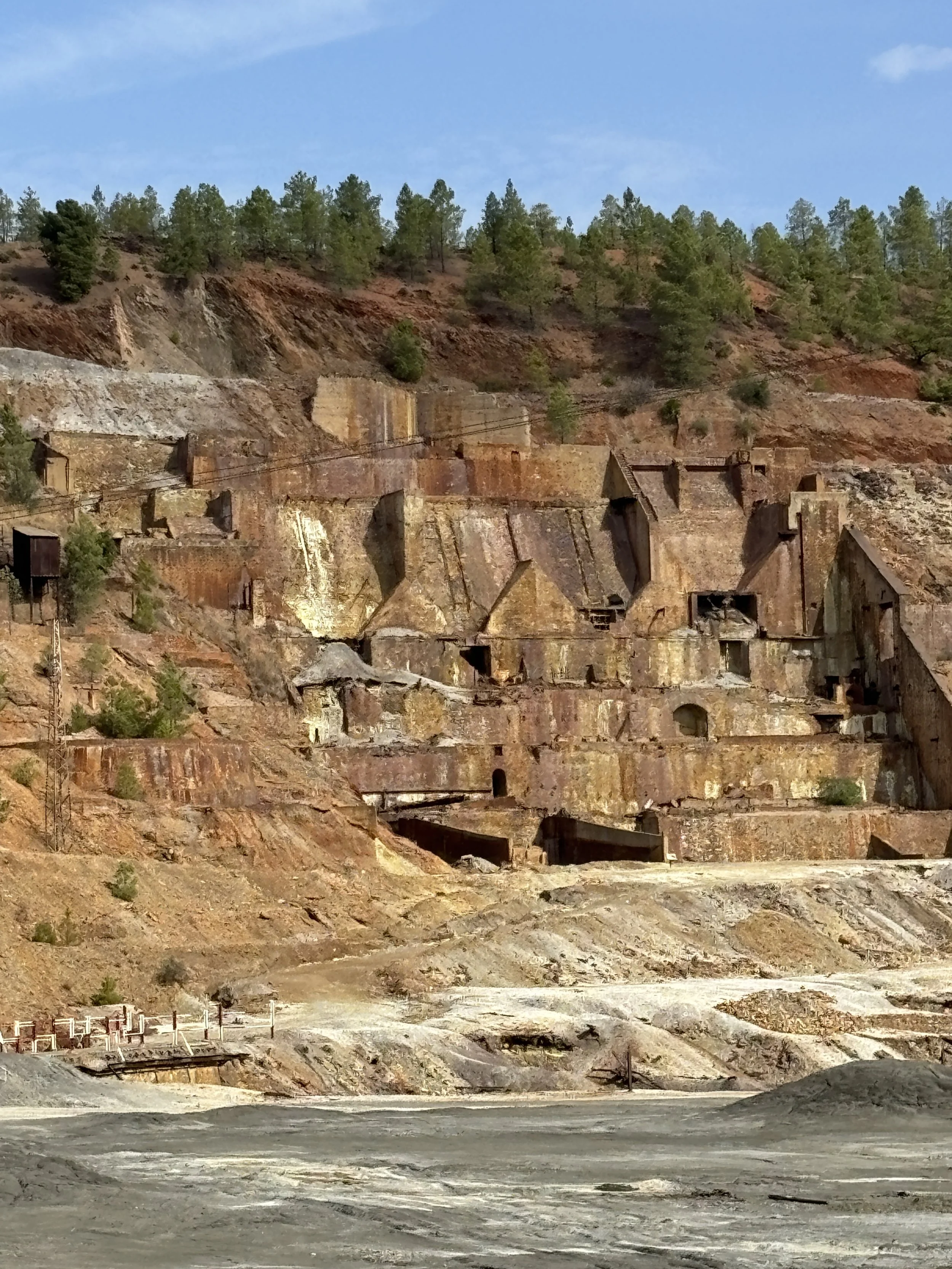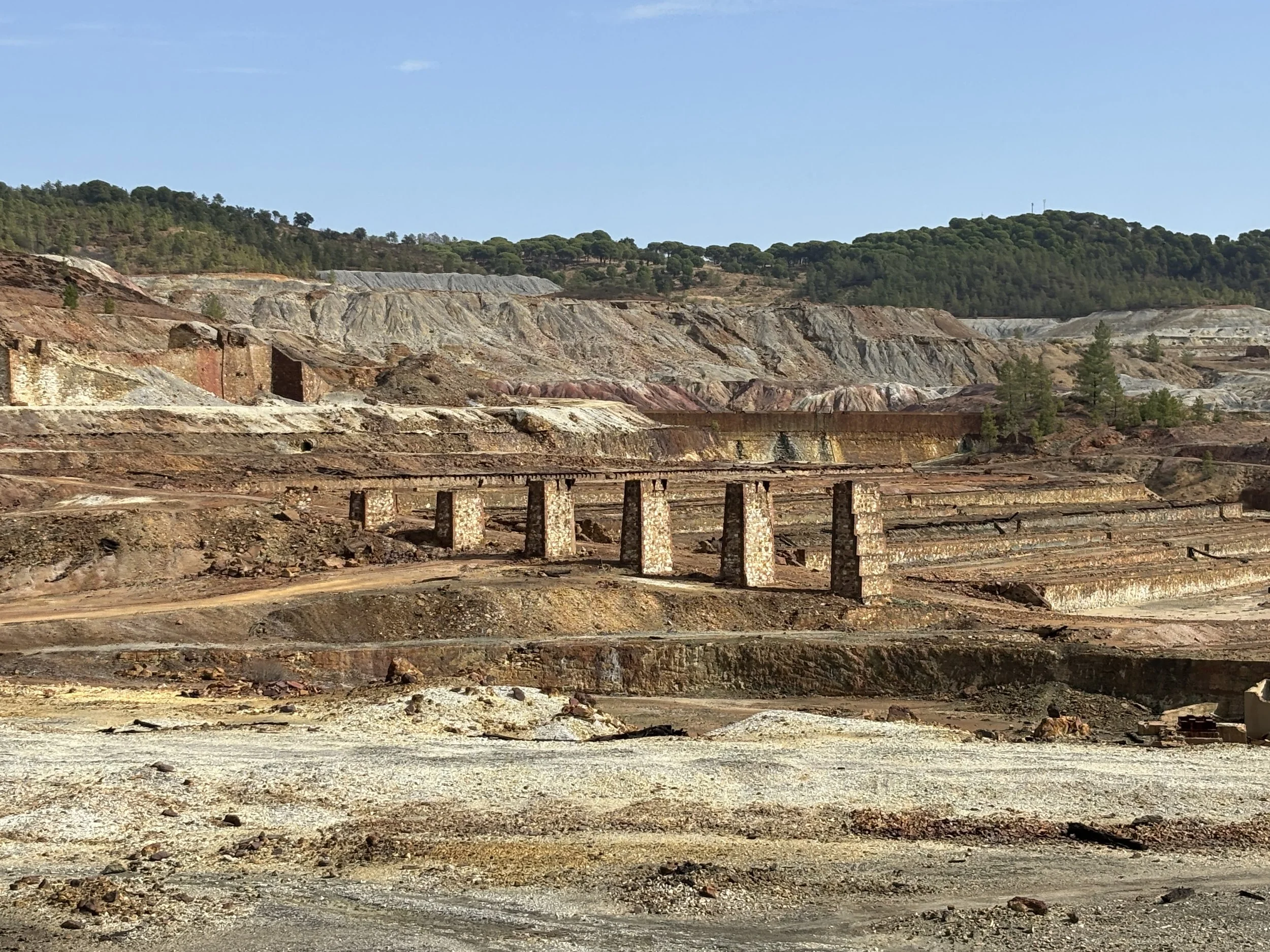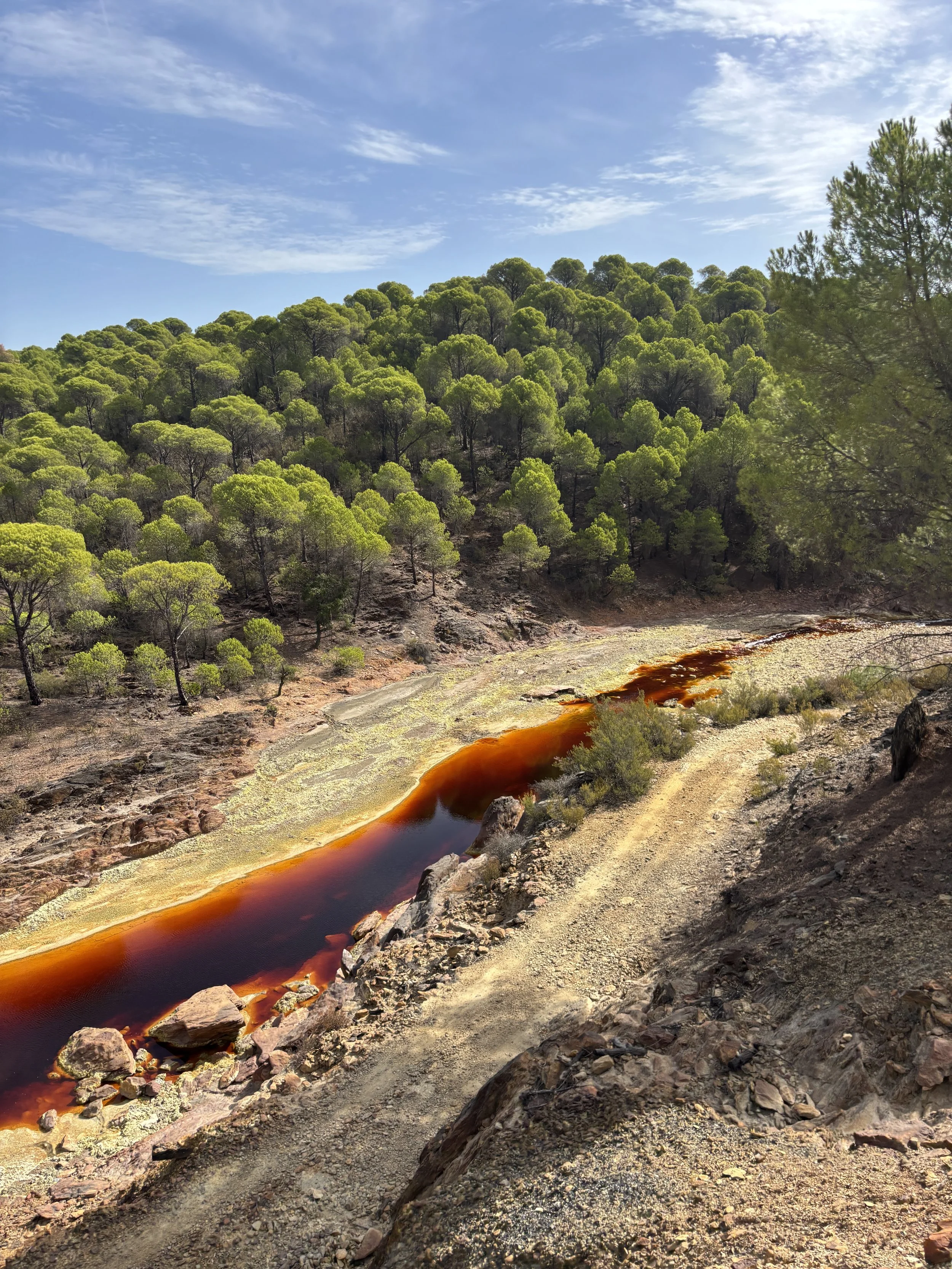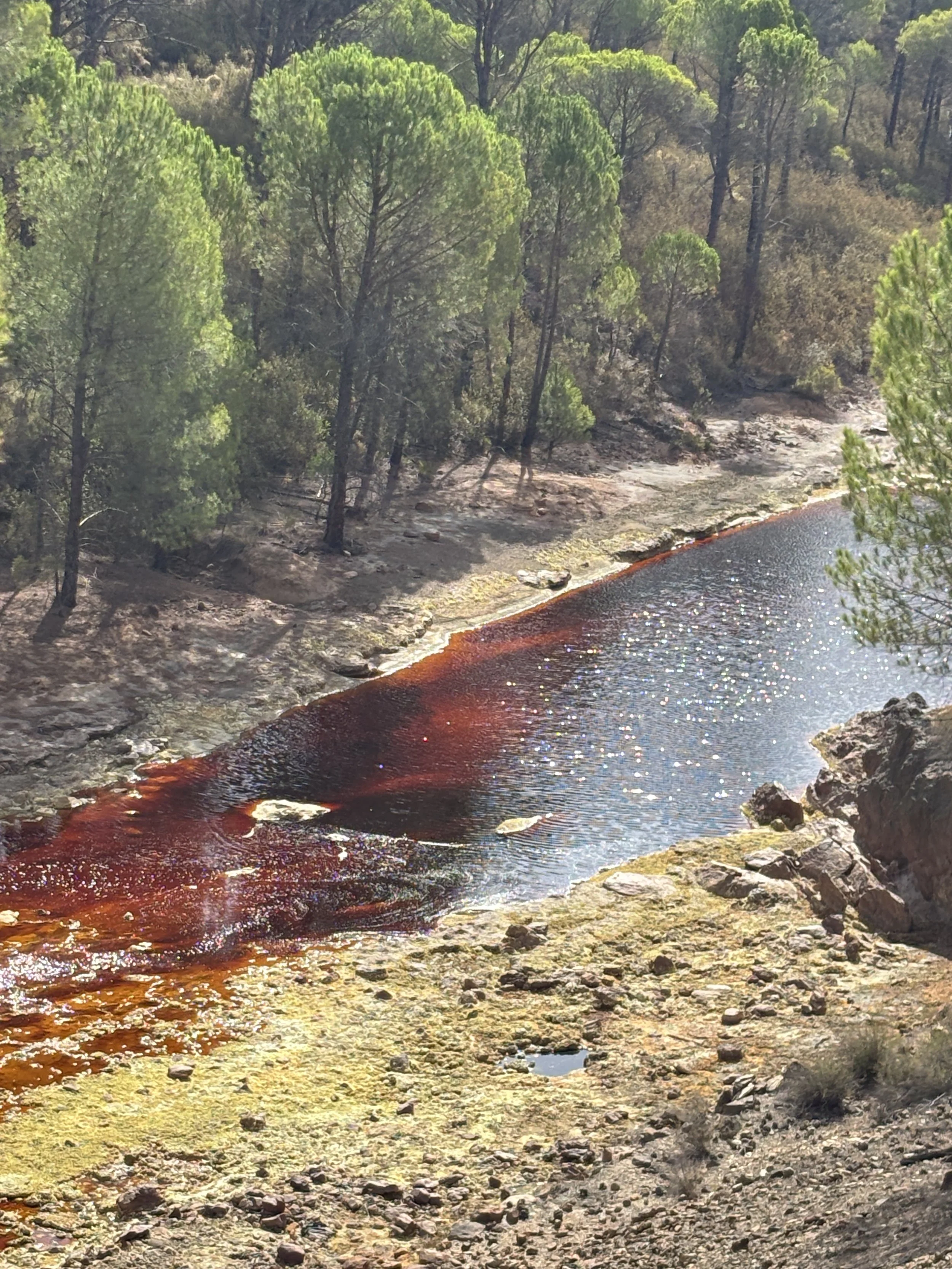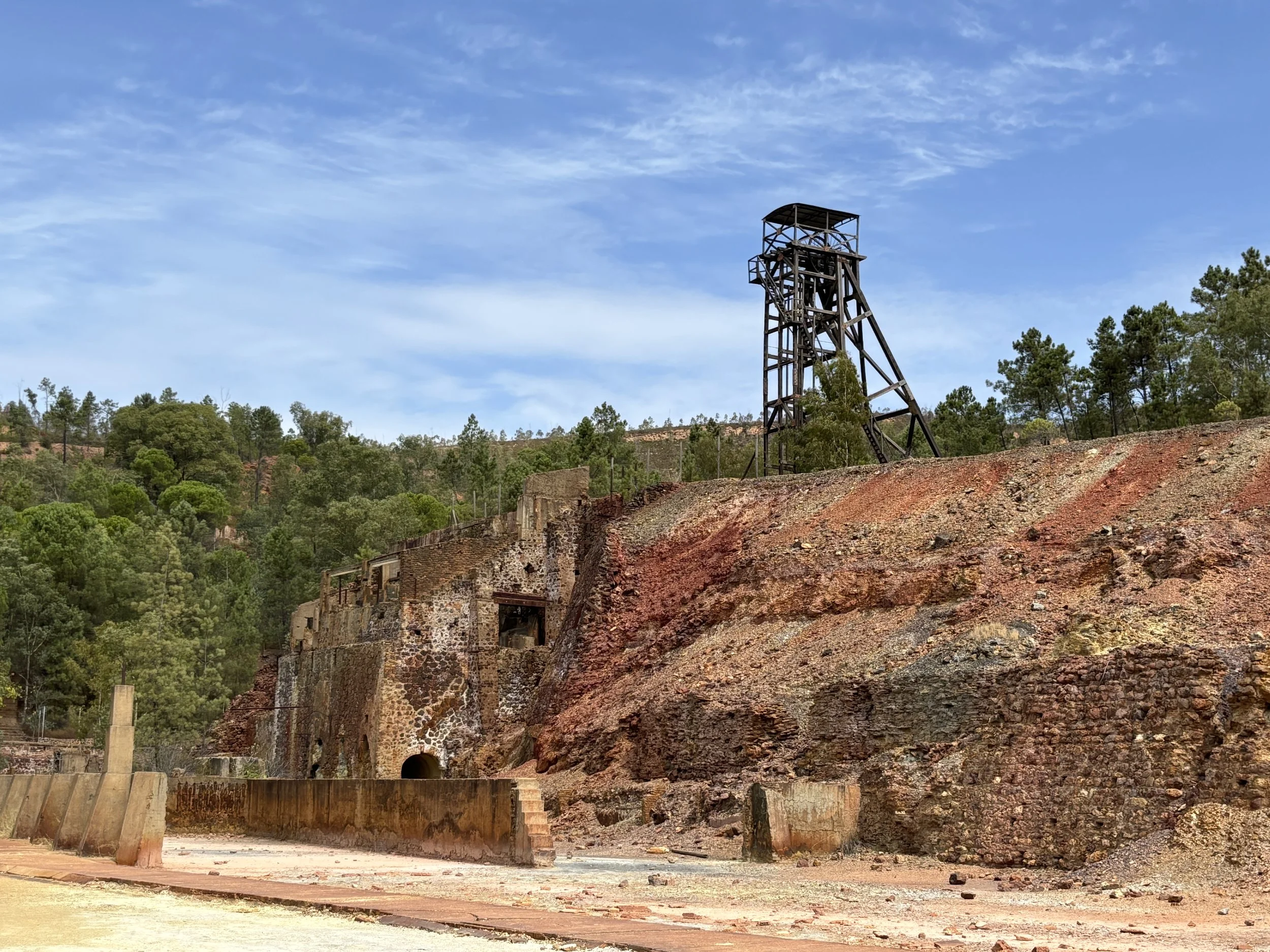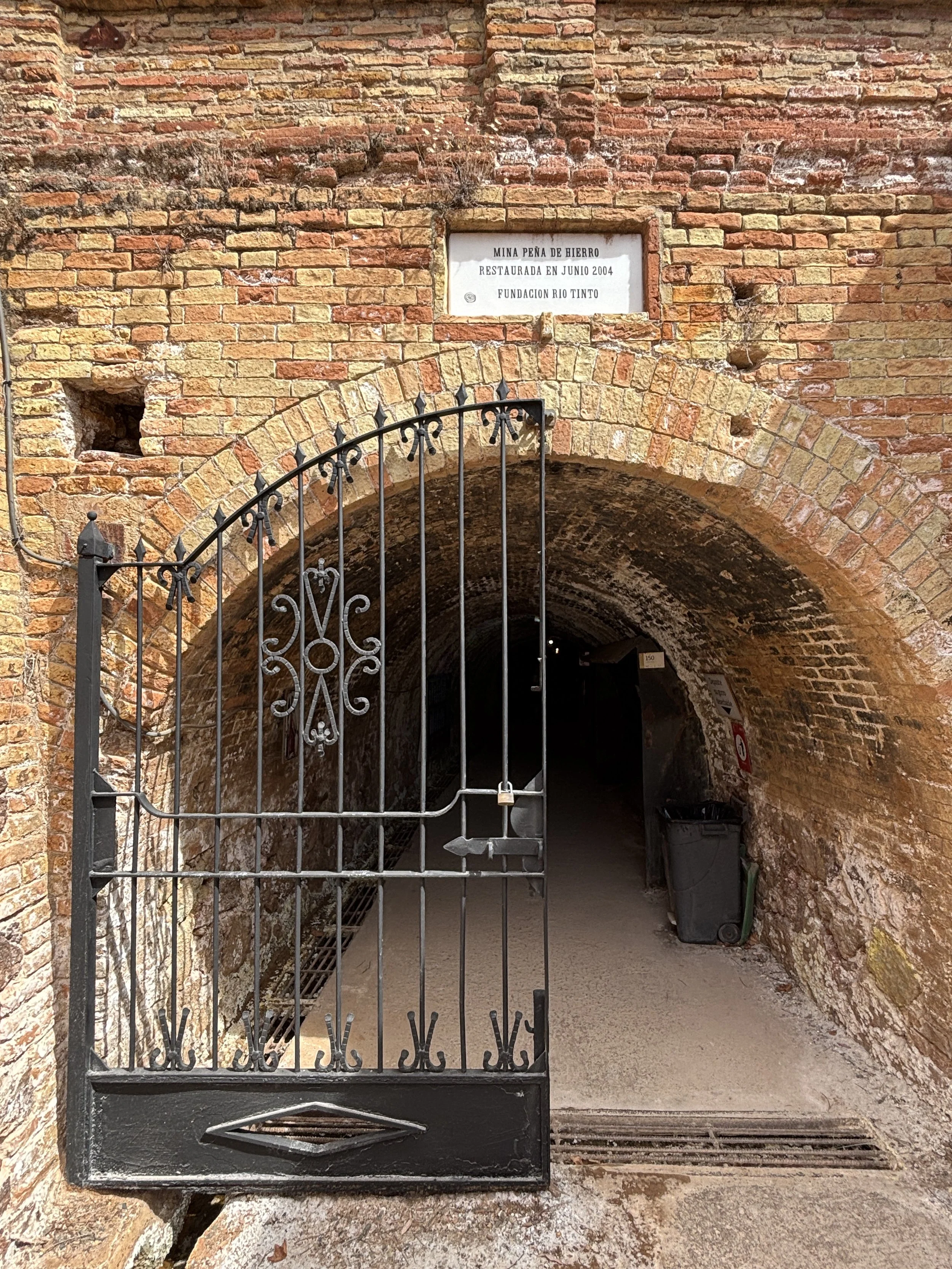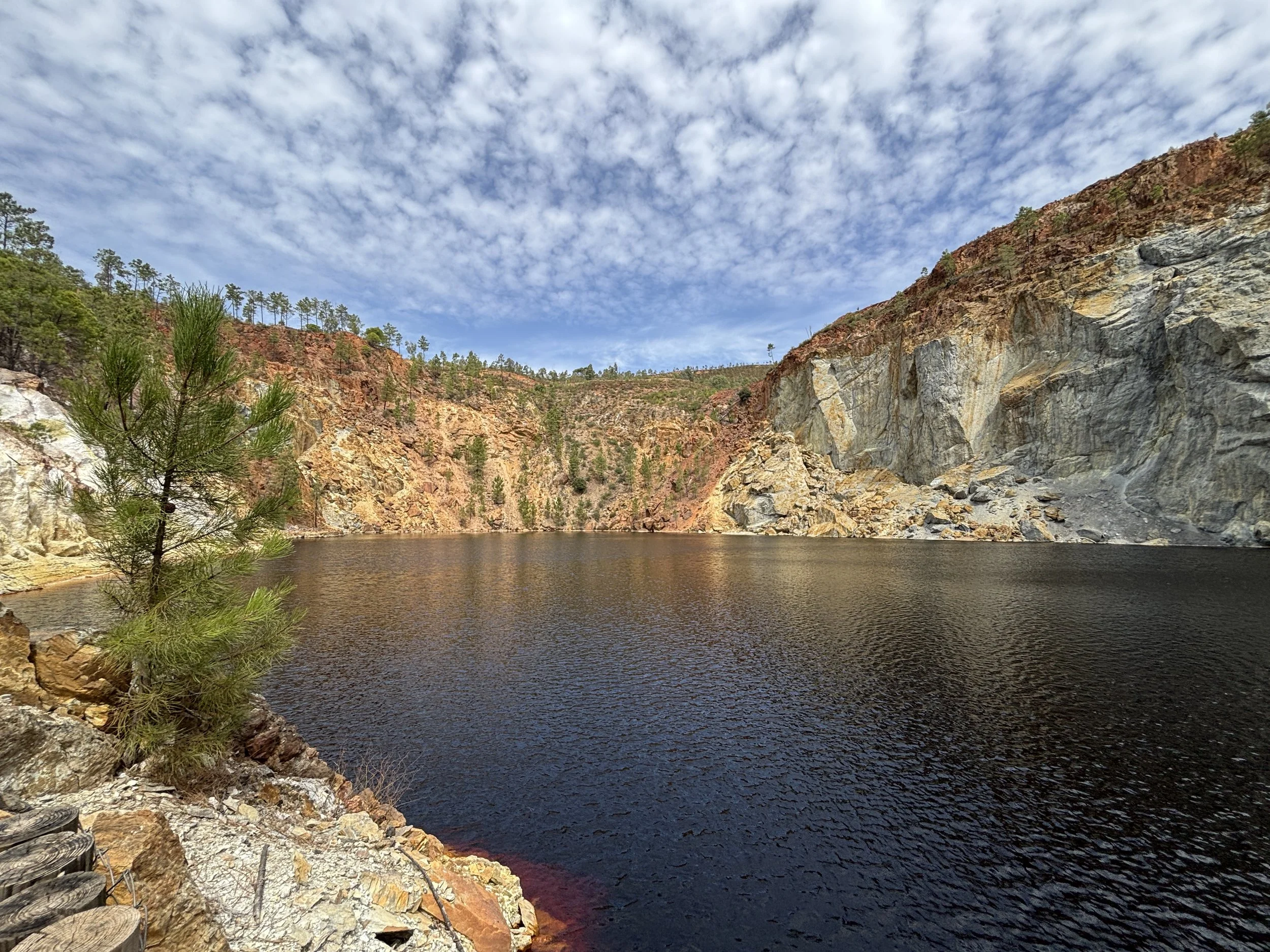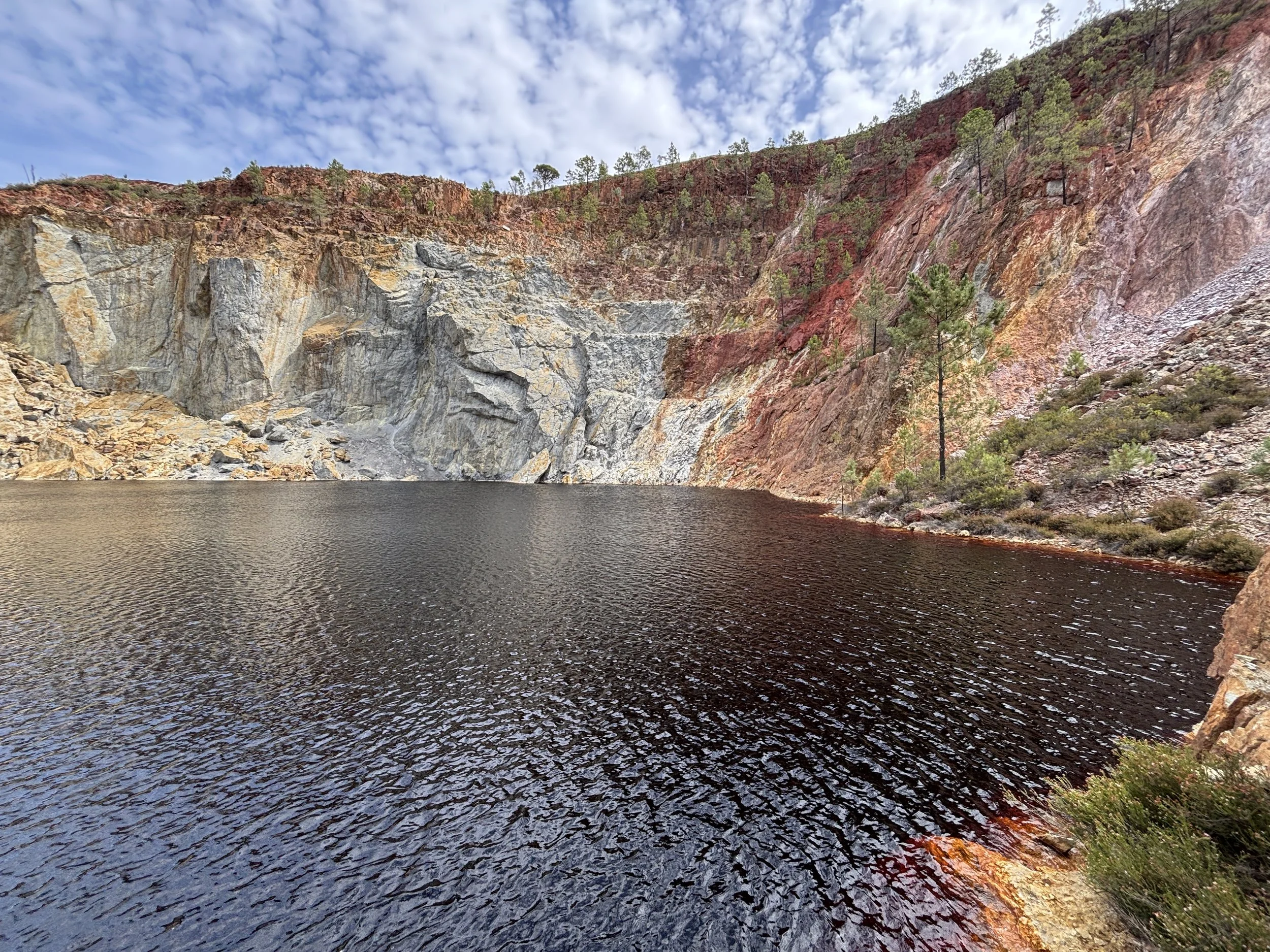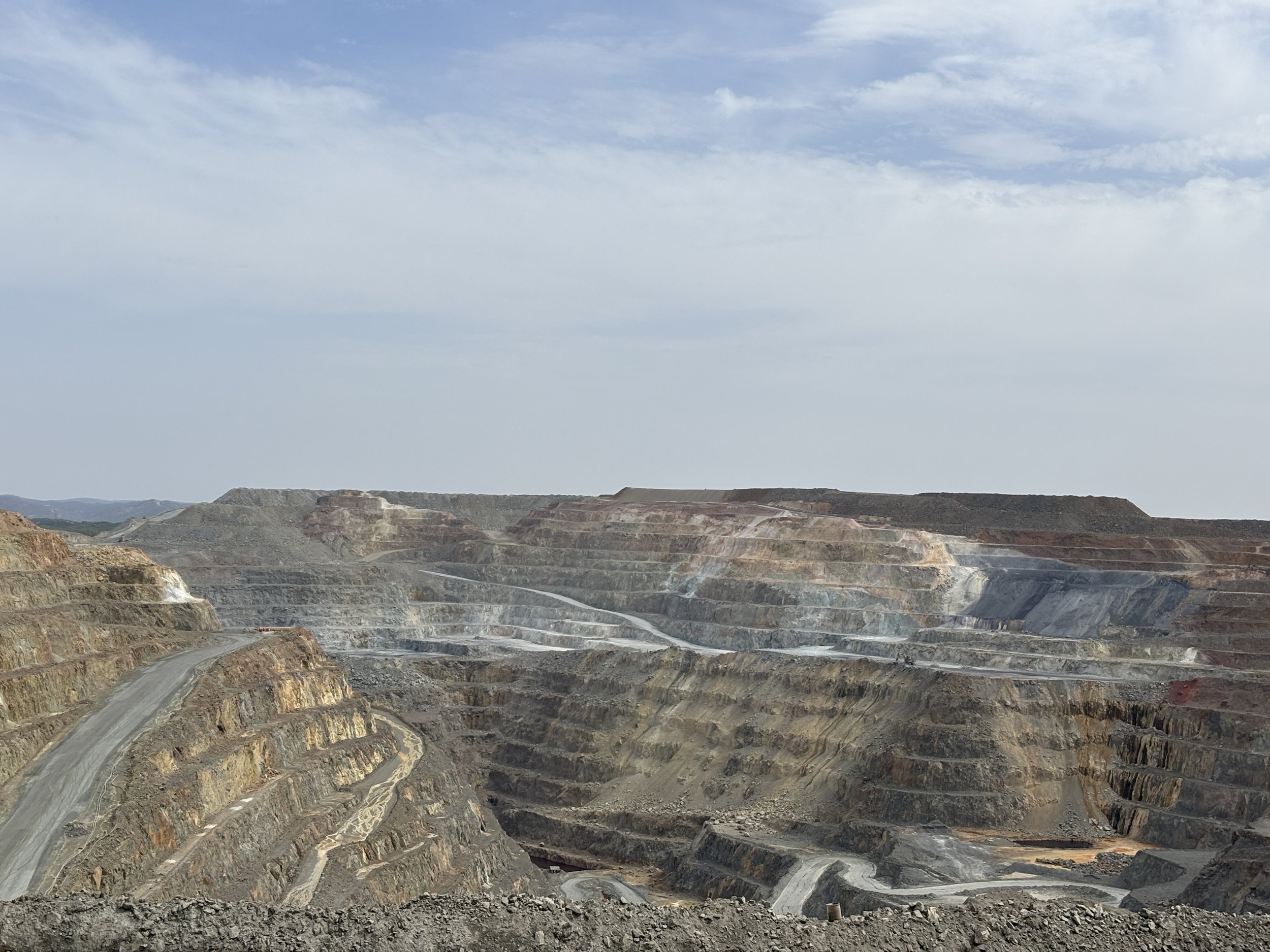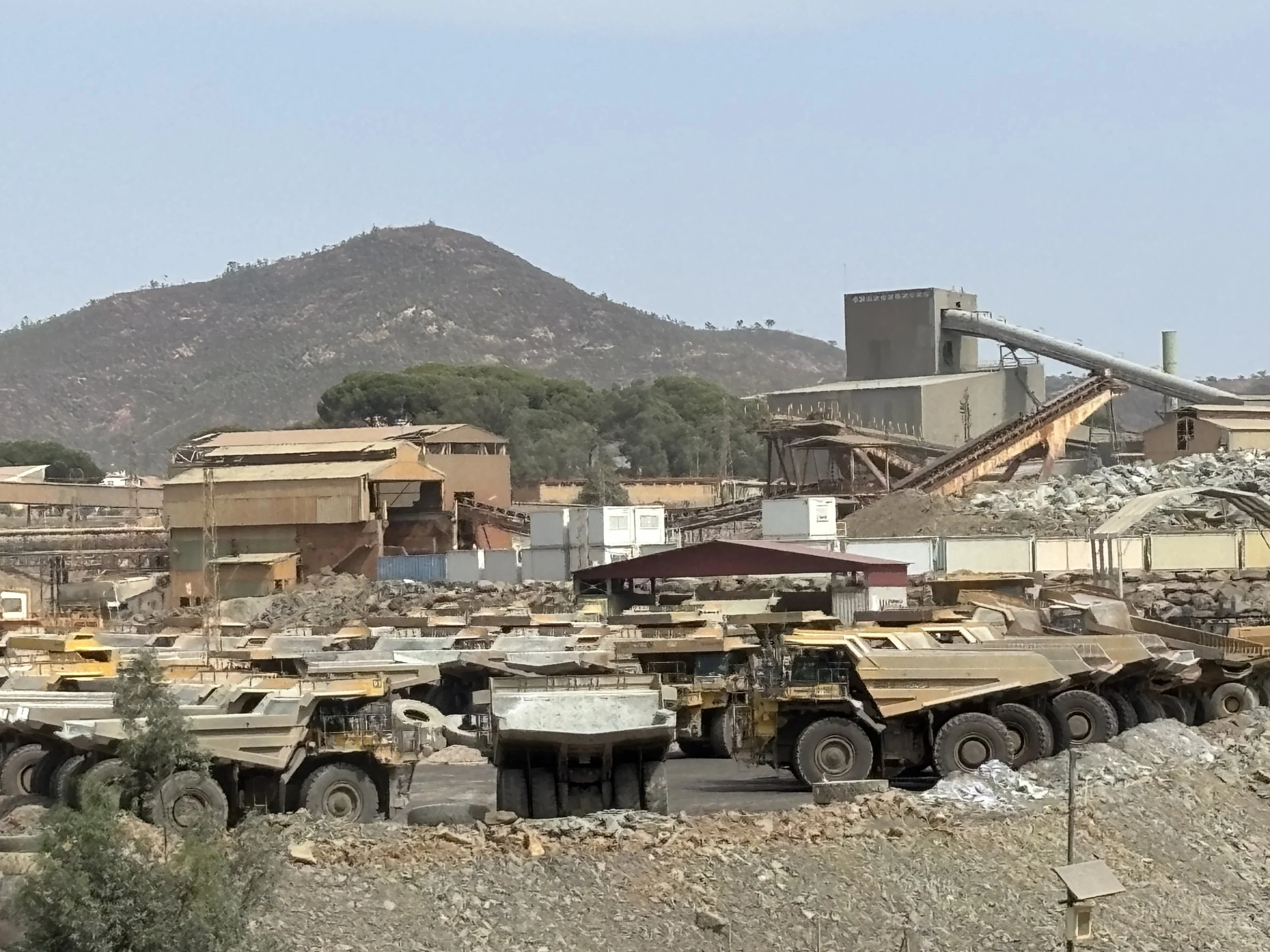Visiting Spain’s Mars-like Rio Tinto mines
Spain’s Rio Tinto mines are among the oldest in the world. People started to mine metals in this corner of southwestern Spain more than 5,000 years ago. And it’s easy to see the reasons for this very early start.
The local river, which flows through the heart of this region, is entirely and naturally red due to the very unique geology of this place.
This very eye-catching characteristic didn’t go unnoticed to the different peoples that have exploited the mines of the Rio Tinto basin at different times in history, from the Ancient Tartessians in pre-Roman times to the British in the Victorian Era.
It is actually said that it was the mineral riches of this part of Spain that drew the Carthaginians and later the Romans to the Iberian Peninsula. Here they found the Tartessians, an Ancient local civilization that still remains somehow mysterious to this day, although archaeologists keep learning more and more about it.
The Romans mined mostly silver in the area, but the heyday of the modern Rio Tinto mines arrived in the late 19th C. and early 20th C. when British investors took over the mining activity and turned it into the largest copper mine in the world. It is not a coincidence that even to this date one of the largest mining firms in the World is non other than London-listed Rio Tinto!
Mining declined in the second half of the 20th C. as global price and demand swings made some of the activities uneconomical, leading to the closure of a large chunk of the mining operation.
Nevertheless, some parts of it survived and Rio Tinto is sill an active mining region, with a company called Atalaya Mining running a large open pit copper mine not far from the town.
How to get to Rio Tinto?
The best way to visit the Rio Tinto mines is to get a car.
It is not only the best option to get there from the closest airport, Seville (SVQ), which lies about one drive away, but it is also necessary to move between the different visitor sites around the Rio Tinto, because they are all spread out in a radius of several kilometers around the town.
Other than that, the town is not particularly difficult to reach. About half of the way is on a motorway, and the last 50km or so are on rather good country roads.
One important consideration is that while most of the points of interest in Rio Tinto are under the umbrella of the “Parque Minero de las Minas de Rio Tinto” (“Rio Tinto Mining Park”) there are different areas open to visitors and each has its own opening times and visit slots.
Likewise, you can costumize your visit and buy different packages depending on how many of these points you wish to see.
The most comprehensive experience can take a whole day, or up to 6 hours (taking into account, as well, that all the attractions close between 3pm and 4pm), although it is possible to do a reduced programme too. On weekends there are also some extra tours and experiences and, on some days, the tourist train is pulled by a steam locomotive.
Below is a map of the different points of interest in Rio Tinto mentioned in this post:
Mining museum in downtown Rio Tinto
Mining Train route
Peña de Hierro mine
Atalaya Mining open pit mine viewpoint (here I refer to the active mine, which is not open to visitors and can be seen from the road)
Corta Atalaya (this is the other open pit mine to the left of this image, which can be visited as part of the Parque Minero experience, although I didn’t have time to visit it on this trip).
Rio Tinto’s Mining Museum
This is the hub, so to speak, of the Rio Tinto mining experience.
It is located in the center of the town of Rio Tinto and it offers, through its exhibits, a comprehensive view of how mining activity was structured in the region and its historical, geological, financial and social aspects.
The museum covers the whole history of mining in the area, starting from the Ancient times and all the way to the present.
The exhibits are rather eclectic. Some rooms are rather old school in the way the different elements are presented, while some others have some really cool experiential stuff.
There is also a good number of machines and other equipment, including locomotives, that were once used in the mines and help get an idea of how life was in the area for both workers and managers.
There is also a replica mining gallery within the museum grounds which is surprisingly long and quite realistic!
The museum has also an annex called “Casa 21” (House 21) which is physically in another location across town. I did not have time to visit that one (I had only half a day to see the whole mining area before driving back to the airport).
At Casa 21 you can see how the mine’s British managers lived in the early 20th C. In fact, Rio Tinto was home to a British expat community which brought to Spain some things like…football! (the first football club in Spain was Recreativo de Huelva, set up in 1889 in the provincial capital!). I am sure it is quite an interesting thing to see!
The Train of the Mines (“Tren Minero”)
In my opinion, the train is the highlight of any visit. It is also the part of the experience in which it is easier to understand the whole scale of the mining operation that went on for many decades at Rio Tinto and also see from up close its environmental aspects and how it transformed the landscape of this area.
What’s more, it offers also the best chance to see (and even dip your toes in!) the red waters of the, aptly named, Rio Tinto, which is, after all, what gives its name to this very unique region.
The train departs at set times and spots are limited, so be sure you book your ride in advance! Also, note that the departure station is not in downtown Rio Tinto, but in an adjacent valley distant a couple of kilometres from the museum.
During the train ride, which took one hour total (around 20 minutes in each direction, plus 10 minutes of free time at the far end of the track to go walk along the river banks), a guide explained many of the geological or man made features we were passing by, the technologies used to mine the different metals and the impact they had on the environment.
She also explained how life was for the workers on site (spoiler: really, really tough!) and how the landscape has been evolving over time.
It’s important to bear in mind that the greenery and forests that today cover parts of the Rio Tinto basin are the result of repopulation. Some of the extraction and refining processes used in the late 19th and the early 20th C. were so toxic that the whole area was really like a desert with almost no vegetation!
At times, the landscape around the tracks looks like a giant rolling stock junkyard, which, to be honest, is part of the appeal when visiting what is essentially an industrial archaeology site.
Despite all the hardships, thousands of people used to live in several settlements scattered through the area. Today it. is possible to see what’s left of them from the train, as well as the vestiges of the different facilities that were processing the minerals.
Why did NASA come to Rio Tinto for Mars-related research?
The star of the visit is, of course, the Rio Tinto! In fact, the tracks follow its course for several kilometers and it is perfectly possible to spot its reddish colour from the train.
No fish or other complex organisms live in the Rio Tinto due to its acidity and high metal content, however it is not a lifeless river! The red colour of the Rio Tinto is natural and it results from the activity of several types of bacteria that have evolved to digest the metals that occurs naturally in these waters and feed themselves by oxidizing them.
This environment is, apparently, the closest you can get on Earth to conditions on the surface of Mars, so this has naturally caught the attention of bio-astronomy researchers and even of NASA, the US space agency, which has used Rio Tinto for some of its experiments.
During the 10 minute break between the two legs of the train trip it is possible to come down to the river bank. It is recommended to be careful not to get stained with the water, since it can be very, very hard to remove any stains. The water is, of course, not drinkable but, even if it is very acidic and has metals in it, it is still within the bounds that make it possible to touch it.
Overall quite an impressive experience that would, by itself, be worth the trip, but there’s more!
The “Peña de Hierro” Mine
The Peña de Hierro mine (which roughly translates as “Iron Hill” in Spanish) is another of the former mining facilities open to visitors in Rio Tinto. It is located some 3km north of the town of Nerva, which is itself a couple of kilometres from downtown Rio Tinto.
The mine has even some galleries of Roman origin, but the bulk of the activity took place between mid-19th C. and 1960, when pyrites and other ores were mined here. A large mining settlement had also existed adjacent to the mine, but this is now gone.
What is left and can be visited at present is a small one-room museum (with pretty interesting exhibits) and one of the galleries of the mine…which has a, let’s say, rather impressive surprise at its end!
When you reach the end of the visitor’s gallery…voilà!…you get to a lake that is now filling the bottom of the deep open pit mine. The sight is rather awesome and the sparse vegetation and pines that are growing on its sides makes you almost forget that is, actually, an artificial landscape!
Atalaya Open Pit Mine
Everything we have seen until now was industrial archaeology, remains of a not too distant but now gone mining past. BUT, as of 2025, there is still mining activity in Rio Tinto! And you don’t need to get too far out of town to see it.
One of the packages offered at the “Parque Minero” include a visit to the Corta Atalaya, a very large open pit mine. Since visiting times are limited (it is only open in the afternoon) I could not include that one in my itinerary.
However, there is a way to see a proper open pit mine even if you can get a ticket for Corta Atalaya, because, literally, on the other side of the road there is yet another spectacular open pit mine!
In fact, there is a viewpoint with some parking space (at the time of my visit the viewpoint parking was blocked by a chain, but there was still space to stop the car at the entrance and walk to the viewing platform) that offers amazing views of the modern open pit mine operation.
From here you can see how the massive semi-trucks trundle up and down the mine’s helicoidal tracks, laden with copper ore which several excavators are collecting at the bottom of the pit.
Quite an impressive sight and an appropriate ending to an intense day in the mines!
Great hotel to stay in Sevilla
While I am aware that there are other hotels closer to the Rio Tinto mines, my base for this trip was the city of Seville, which is located roughly one hour drive away from the mining basin.
There I stayed at the Hotel Querencia de Sevilla, Autograph Collection by Marriott.
Despite being part of a large international chain, this hotel has managed to preserve a boutique atmosphere and a very local flair in the overall presentation and theme. The hotel is as central as it gets, just off the main commercial street and a mere two minutes walk from Seville’s Cathedral and the Reales Alcázares, two of the city’s most important. historical landmarks.
The room was impeccably clean and decorated in contemporary style, but it had quite a few Arabesque details that are so typical of Andalusian architecture. I liked the wooden floors as well (always better than carpet!) and the touch of green highlighting some of the key elements.
There were also a couple of nice, locally-inspired goodies waiting for me: a fan (which is an object often associated with Andalusian culture as well) and a box of, also locally-produced “roscos”, a type of shortbread typical of Andalusia.
One of the highlights of this hotel is the rooftop terrace, which has also a small swimming pool which offers what I am pretty sure must be some of the best views in town.
This pool is truly an amazing amenity to have when you come back to the hotel after a day walking around the city in temperatures close to 40 C! Access is easy and direct via the lift and in room you have a set of bathrobes and slippers.
The views are also amazing at night, btw!
Here some snaps from the restaurant, where breakfast is served.
As you may have noticed from the pics, the theme of bullfighting is very present in this part of the hotel. Now, I know this is an activity that can be controversial, nevertheless it is undoubtably very rooted in local Andalusian culture and I think this is precisely the point the hotel is trying to make here.
The food selection, by the way, was really nice and tasty, particularly the savory section, which offers a good range of prime quality Iberian ham, cured meats and cheese.
It is also to have breakfast in a small terrace that, while it doesn’t have the views of the rooftop one, is also pretty nice, particularly in the balmy morning weather, and allows you to see the street directly underneath.
So, all in all, I really liked this hotel. Querencia de Sevilla is definitely one place I will keep in mind whenever I have the chance to come back to Seville!
